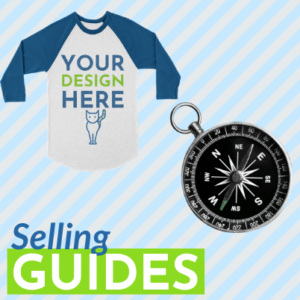Ecommerce Brand Basics
An ecommerce brand is more than your logo and site colors, it’s the way you present yourself to your audience that leaves an impression. Branding also helps set expectations on what customers will get when shopping at your online store.
It’s true people make their entire careers out of being branding experts, but you can nail down the ecommerce brand basics with the right strategy in place. Here’s a walkthrough of how to approach your own branding for a foundation and ecommerce business that lasts.
Establish a Target Audience
The foundation of your brand starts with understanding who your target audience is. Where do they live? What do they need to resolve their pain points and issues? What are their hobbies? The more you understand who your target audience is, the easier it is to build a brand and speak directly to that market.
To figure out who your target audience is, gather clues from your current customer base. Your analytics and data should give you insights into commonalities of what they share, what they’re buying, and their demographics.
It’s also smart to check out your competition & see who they’re catering to. It’s also okay to guide your target audience towards the people you want to serve. Make sure you nail down your brand around that audience, so they feel you’re talking directly to them.

Develop User-Friendly Design
User-friendly design, or UX, can make or break your next sale. Research shows that 52% of online shoppers wouldn’t return to a website because of its overall aesthetics. The good news is you don’t need web design skills to create a reliable UX experience.
Platforms like Shopify, Etsy, and Amazon FBA make it easy to sell your products online. Done-for-you solutions, templates, and step-by-step directions break it all down for you. You can also hire a web designer who focuses on UX design at a reasonable price through online platforms like Upwork.
Make Sure Its Mobile-Friendly
Mobile-friendliness can dramatically impact your search ranking. More than half of all global web traffic comes from mobile devices. Google also prioritizes mobile page load speed as a critical metric for ranking your website.
Most web builders, templates, and selling platforms are already mobile-friendly. However, integrating too many apps can drag down the load time of your site. An ecommerce site audit is als a good investment of your time, or you can hire an ecommerce-focused web developer to test your site and figure out how to optimize it.

Use Quality Product Images
It’s probably already intuitive that shoppers like excellent product images. However, research shows 75% of online shoppers rely on product photos when deciding on a potential purchase.
Taking photos of your products can feel intimidating, but it isn’t that difficult. A smartphone camera is all you need to get started. Try using a real-world background, natural lighting, and tripod to do wonders for your product photography.
Define Your Brand Voice
Developing a brand voice takes time to refine but is an essential part of your ecommerce presence. One place to start is by reading through your target market’s correspondence. What type of tone do they use? What are their concerns and vibe? You can also do a little market research and see what customers are saying on your competitors’ sites or social media channels.
It’s also helpful to describe your brand voice in a few words:
- Quirky
- Engaging
- Informative
- Relatable
However, the real secret to defining a brand voice is being consistent. Your ecommerce presence can evolve over time, but switching tones and personalities on a monthly basis will send mixed signals to your customers.
Create Engaging Customer Service
You may not think customer service has much to do with your ecommerce brand, but it plays a significant role. Think about major players like Zappos, who built their entire model on engaging, friendly customer service. Their staff is empowered to act for their customers’ benefit & offers an incredible return policy.
Train your team to offer a consistent & engaging customer service experience. How will you resolve issues? Create cohesive guidelines for customer interaction & make them feel like a valued part of your brand.

Develop a Brand Promise
A brand promise can be similar to a tagline but promises a specific experience or feature when buying your product. For example, Geico’s brand promise is, “15 minutes or less can save you 15% or more on car insurance.” eBay’s is longer with the promise, “We offer sellers the ability to grow a business with little barrier to entry regardless of size, background or geographic location. We never compete with our sellers. We win when our sellers succeed.”
What do you want to promise your customers when they shop at your store? Consider playing with ideas centered around:
- Hassle-free shopping experience
- Fast shipping
- Curated monthly products that speak to their personality
- Making customers’ life easier
- Only using the highest quality, best-tasting, sustainable coffee products
Whatever your brand promise, make sure you stick to it to build up trust with your customers.
Share Your Brand Story
A good brand story can increase your sales and give your audience something to talk about. Customers who love your brand story are 55% more likely to buy from you in the future. Warby Parker’s brand story centers around the idea that eyeglasses are too expensive.
The brand story goes that one of the founders went without glasses for an entire semester in college because they were too expensive. A business was born from wanting to revolutionize the experience by offering “try on at home” designer eyewear at a revolutionary price.
Warby Parker’s story is something most anyone can relate to but isn’t extraordinary or flashy. It’s not the story of Richard Branson climbing mountains and skydiving to launch his dozens of companies taking over the world. It’s relatable & to the point. Simplify the process and find your own brand story of why you’re in business and why you want to help others.

Maintain a Content Strategy
How are you spreading the message about your brand and ensuring customers connect with it? The right content strategy can reach your audience repeatedly through emails, blogging, and social media posts.
The key is maintaining a consistent content strategy, whether it’s once a month or daily. Focus on the areas that produce the most ROI, whether posting on Instagram or releasing video tutorials for your products & services. The more content you release, the more your audience will grow to trust your brand and see it as an integral part of their shopping experience.
What are you doing to develop the brand of your ecommerce store? Leave a comment below of your best tips and insights!


